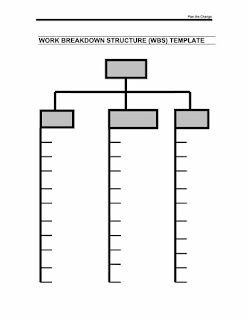Project Management
Project Management Life Cycle
A project is a planned set of interrelated tasks to be executed
over a fixed period and within certain period and within certain cost and other
limitations. The key characteristics of project is given below.
·
Achieve a specific objective
·
A planned activity
·
Work to be carried out in several phases
·
Time Limit
·
Resource Limit
·
Coordinated
·
Project is done by a team.
There five stages in Project Management Life Cycle.
·
Initiation- This is the first stage of Project
Management Life Cycle. In this stage is Launches the project or phase. The
needs of the organization are identified and alternative solutions are
researched. The power to launch the project or phase is given through project
charter, and when initiating the project, the wonderful project manager is
selected.
·
Planning- Planning is the second stage of the
Project Management Life Cycle. In planning stage, it requires the project
manager and the project team to develop the various core and subsidiary
management plans necessary for project completion. This process is one of the
most important pieces of project management.
·
Execution- This is the third stage of Project
Management Life cycle. Allows the project team and vendors to move towards
completing the work outlined in the planning process. The project team move
forward with completing the project work.
·
Controlling- Controlling is the third stage of
Project Management Life Cycle. The project manager must control the work the
project team and the vendors are completing. The project manager checks out the
deliverables of the phases are in alignment with the project scope, defend the
scope from changes, and confirms the expected level of quality of the work
being performed. This process also requires the project manager to confirm that
the cost and schedule are in sync with what was planned. Finally, the project
team will inform the project sponsor, the management and perhaps even the key
stakeholders in the organization.
·
Closure- This is the final stage of Project
Management Life Cycle. The closing process, sometimes called the project post-mortem,
involves closing out the project accounts, completing final acceptance of the
project deliverables, filling the necessary paperwork and assigning the project
team to new projects.
The supervision and control of the work required to complete the
project vision can be known as Project Management. The project team carries out
the work needed to complete the project, while the project manager schedules,
monitors and controls the various project task. Organizing, Planning,
Execution, Timing, Control, Strategy, Development, Monitoring, Analysis and
Process are the task which commonly happens in a Project Management.
Internal Threats that can happen to an Organization System
·
Security may fall to human error
Database information is not always compromised by purely
electronic. So some errors can be happening through a person. As an example, an
employee may copy information from an entire database table into an email for
troubleshooting purposes and accidentally include external email addresses in
the recipient list. Database information is not always compromised by purely
electronic means. (Chron, 2018) . As a solution, it
is important to make security options in this kind of situation.
·
Employees who has privileges to Damage the
System
They will sell information to the black market. It will not easy
to stop from the people who have full access to the system. It will be a reason
for the organization to get bankrupt. (Chron, 2018)
External Threats that can happen to an Organization System
Attack through Chain of
events.
A complex chain of events can affect an IT database in many ways.
Cut power to a server that stores software licenses for other servers is a way
that affect to an organizations database. From this, the system will be down.
Because, if the licenses are unavailable, database backup software may not
function at its scheduled time. It will be affect an organization.
(Chron, 2018)
Hackers
If the organizations software applications maintain open
connections to IT databases, hackers trying to take control of these
applications of the organization. After taking control of the applications,
they change its passwords to their defaults. From that they can access the
system easily anytime they want. They can steal customer details, money. It
will be affect deeply through the organization. It will lose their business
reputation and information. (Chron, 2018)



Comments
Post a Comment